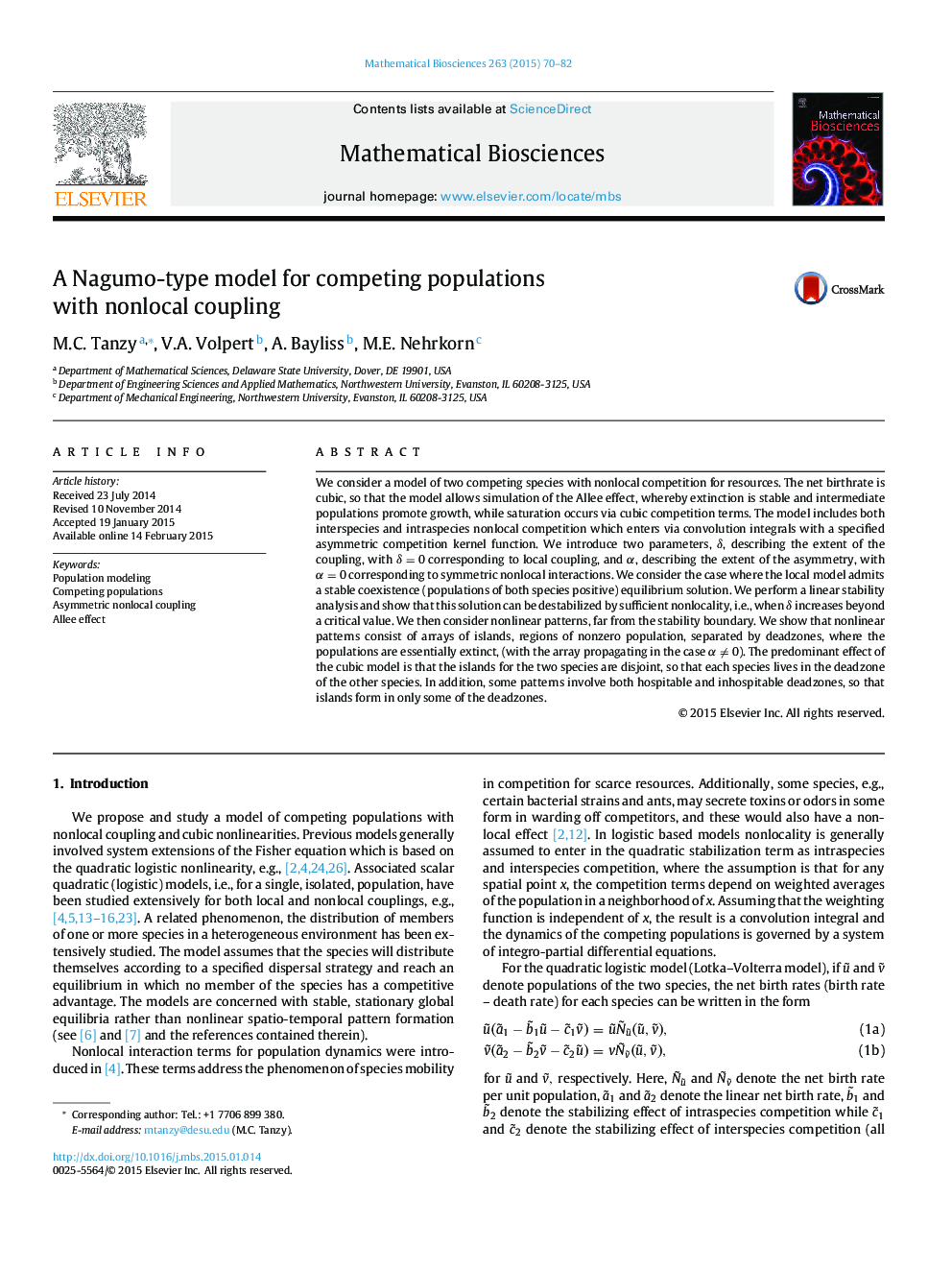| Article ID | Journal | Published Year | Pages | File Type |
|---|---|---|---|---|
| 6371970 | Mathematical Biosciences | 2015 | 13 Pages |
â¢We study a model describing competing populations with asymmetric nonlocal coupling.â¢We introduce the Allee effect through the use of a Nagumo-type model.â¢We perform a linear stability analysis and compare with computations.â¢We describe propagating solutions in the nonlinear regime.â¢We find species propagation patterns in which species cluster in exclusive regions.
We consider a model of two competing species with nonlocal competition for resources. The net birthrate is cubic, so that the model allows simulation of the Allee effect, whereby extinction is stable and intermediate populations promote growth, while saturation occurs via cubic competition terms. The model includes both interspecies and intraspecies nonlocal competition which enters via convolution integrals with a specified asymmetric competition kernel function. We introduce two parameters, δ, describing the extent of the coupling, with δ = 0 corresponding to local coupling, and α, describing the extent of the asymmetry, with α = 0 corresponding to symmetric nonlocal interactions. We consider the case where the local model admits a stable coexistence (populations of both species positive) equilibrium solution. We perform a linear stability analysis and show that this solution can be destabilized by sufficient nonlocality, i.e., when δ increases beyond a critical value. We then consider nonlinear patterns, far from the stability boundary. We show that nonlinear patterns consist of arrays of islands, regions of nonzero population, separated by deadzones, where the populations are essentially extinct, (with the array propagating in the case α â 0). The predominant effect of the cubic model is that the islands for the two species are disjoint, so that each species lives in the deadzone of the other species. In addition, some patterns involve both hospitable and inhospitable deadzones, so that islands form in only some of the deadzones.
